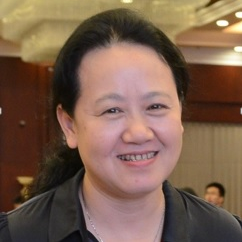Disaster Risk Reduction: In Support of the Sendai Framework and Improved Societal Well-Being
A special issue of Sustainability (ISSN 2071-1050). This special issue belongs to the section "Hazards and Sustainability".
Deadline for manuscript submissions: closed (30 June 2023) | Viewed by 5503
Special Issue Editors
Interests: photogrammetry and remote sensing; geographic information system; hazard and risk management; 3S technology in SDGs
Special Issues, Collections and Topics in MDPI journals
Interests: GIS; land cover; change detection
Interests: 3D indoor modelling; 3D GIS; integration of BIM and GIS; 3D spatial analysis; DBMS; emergency response
Special Issues, Collections and Topics in MDPI journals
2. National Academy of Agriculture, 40124 Bologna, Italy
Interests: sustainable soil management; soil restoration and conservation; digital soil mapping and geodatabases; land suitability for winegrape and other quality crops
Special Issues, Collections and Topics in MDPI journals
Special Issue Information
Dear Colleagues,
Each year, disasters arising from storms, floods, volcanoes, and earthquakes cause thousands of deaths and tremendous damage to property around the world, displacing tens of thousands of people from their homes and destroying their livelihoods. In the last one and a half years, the world has experienced a pandemic of dimensions not experienced in recent decennia that halted life, trade, and production globally. We invite you to share your theoretical research, review studies, and experiments in this Special Issue. The Special Issue aims to:
- Show the importance international geoscience bodies, governmental and non-governmental organizations, to identify, support, and advance initiatives to implement the Sendai Framework through interdisciplinary action.
- Collect good practices on coordinating and supporting of the implementation initiatives for disaster risk management in accordance with the principles and goals of the Sendai Framework.
- Demonstrate by examples the importance of advising on the rationale and role that science should play in disaster risk management and work to strengthen that rationale and role.
- Illustrate the use and applicability of geospatial technologies in support of the variety of initiatives on Disaster Risk Reduction
In this Special Issue, original research articles and reviews are welcome. Research areas may include (but not limited to) the topics as specified below:
- Geospatial data policy and practices and their harmonization under Sendai framework.
- Formal education and curricula development to emphasize on sustainable development as prescribed by Sendai Framework.
- Tools for dissemination of objective information about the current situation of disasters and plans for solution to avoid panic and wrong decision on various levels of state managements.
- Legal issues around interoperability, rights management, and privacy.
- Value and sustainability of developing SDI, Digital Twins, and Smart Cities to support DRR.
- Needs and gaps in data skills to interpret, process, analyse and estimate simulations and predictions with geospatial data to support decision-making process.
- Availability, findability, accessibility, interoperability, and reusability of geospatial data in for the purpose of DRR.
- The challenges in combining, integrating and analysis of geospatial data.
- Best practices of geospatial data use for DRR.
- Best practices of cross collaboration between international and national organisations for DRR
We look forward to receiving your contributions.
Prof. Dr. Orhan Altan
Prof. Dr. Jie Jiang
Prof. Dr. Sisi Zlatanova
Prof. Dr. Edoardo A. C. Costantini
Prof. Dr. Yasuhide Hobara
Guest Editors
Manuscript Submission Information
Manuscripts should be submitted online at www.mdpi.com by registering and logging in to this website. Once you are registered, click here to go to the submission form. Manuscripts can be submitted until the deadline. All submissions that pass pre-check are peer-reviewed. Accepted papers will be published continuously in the journal (as soon as accepted) and will be listed together on the special issue website. Research articles, review articles as well as short communications are invited. For planned papers, a title and short abstract (about 100 words) can be sent to the Editorial Office for announcement on this website.
Submitted manuscripts should not have been published previously, nor be under consideration for publication elsewhere (except conference proceedings papers). All manuscripts are thoroughly refereed through a single-blind peer-review process. A guide for authors and other relevant information for submission of manuscripts is available on the Instructions for Authors page. Sustainability is an international peer-reviewed open access semimonthly journal published by MDPI.
Please visit the Instructions for Authors page before submitting a manuscript. The Article Processing Charge (APC) for publication in this open access journal is 2400 CHF (Swiss Francs). Submitted papers should be well formatted and use good English. Authors may use MDPI's English editing service prior to publication or during author revisions.
Keywords
- disaster risk management
- GIS modelling
- Sendai Framework
- DRR
- sustainable development









